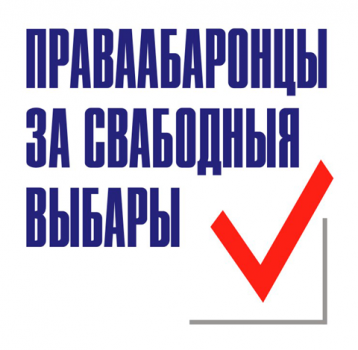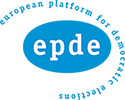Election of the President of Belarus 2010: Preliminary Findings of Monitoring First Two Weeks of Election Campaign (14-26 September)
1. The election of the President of Belarus 2010 is held on the basis of the Electoral Code of 2000 with amendments and additions made on January 4, 2010. These changes contributed to a certain extent to bringing the national electoral legislation to democratic standards, but, as shown by the local elections in April 2010, did not change the nature of the electoral process, during which serious systemic deviations from democratic standards were registered.
2. The consideration of the issue of appointing the presidential election on December 19, 2010, by the House of Representatives of the National Assembly, which took place on September 14, was one-sided and hasty, while the preliminary preparation thereof failed to comply with Article 65 of the Constitution, according to which "preparation and holding of elections shall be made openly and publicly."
3. The package of decisions (statements) and other documents on the organization and preparation of the election, approved by the Central Election Commission (CEC) on September 15 did not contain any significant differences from the similar package approved on the eve of the 2006 election.
4. Two former presidential candidates at the 2006 election – Alexander Kozulin and Alexander Milinkevich – declared their non-participation in the election; the latter explained his decision to the absence of changes in the electoral legislation, which could make the election process and vote count transparent.
5. The process of submitting applications to the CEC for registration of initiative groups by the individuals, who intend to become presidential candidates, as well as of lists of members of initiative groups, was held in accordance with the Electoral Code, with one exception: the incumbent President Alexander Lukashenko presented the necessary documents not in person, as requires by Article 61 of the Code, but in the person of the head of his election headquarters – Minister of Education Alexander Radskov, who was also not noticed by outside observers as appearing at the CEC.
6. The applications and lists of 19 initiative groups were considered by the CEC within the term as scheduled for the election period. Certificate on registration of initiative groups were awarded to 17 citizens; two were rejected on the grounds that their groups failed to have 100 members as required by the electoral legislation. In considering the lists of certain candidates (for example, of Sergey Gaidukevich), the CEC has demonstrated extraordinary tolerance to the faults in submitted documents.
7. The process of nominating candidates into 155 Territorial Election Commissions (TECs), which was over on September 26, was, as a whole, inline with the electoral legislation, and local authorities accepted applications from all the subjects entitled to nominate candidates to election commissions (long-term observers over the campaign have fixed only one case, where an application was not accepted).
8. Information about the place and time of joint sittings of Council of Deputies and Executive Committees, at which the membership of TECs was to be approved, was poorly available; and observers over the campaign had to specifically address local authorities with requests to this effect.
9. Before September 24, as required by the CEC, local authorities had identified the places forbidden for holding pickets with the aim to collect voter signatures for nominating presidential candidates. With the exception of Minsk, where restrictions on picketing are minimal, almost all other localities introduced tough restrictions, which in fact prohibit collection of voter signatures in places, which are most convenient for contacts with voters of those initiative groups, which support oppositional candidates. At the same time, neither the Electoral Code nor the CEC have addressed the issue of collecting voter signatures at state enterprises and institutions, that is, exactly in those places, where in 2001 and 2006 the overwhelming majority of voter signatures in support of Lukashenko was collected, and where representatives of other candidates faced obstacles and restrictions introduced by administrations.
10. As reported by long-term observers, formation of the initiative group of the incumbent President the administrative resource was actively used.
11. The state-owned television and radio, as well as central newspapers, made a broad but one-sided coverage of the electoral process. Even before it became officially known about Alexander Lukashenko's participation in an election campaign, a large number of reports and comments were actually early campaigning for him. Information about other potential candidates was presented in extremely limited volume and in negative light.
12. In general, in terms of organization of the election process, the first two weeks of the 2010 election campaign were almost indistinguishable from the first two weeks of the presidential election campaign in 2006.
The aim of the campaign "Human Rights Defenders for Free Elections" is observation of the election of the President of the Republic of Belarus, assessment of the electoral process from the viewpoint of Belarusian electoral legislation and international standards of free and democratic elections, and keeping the Belarusian public and international community duly informed about our conclusions. The campaign is independent and politically non-engaged. More information about the campaign may be found in the websites of the Human Rights Centre "Viasna" (http://spring96.org) and Belarusian Helsinki Committee (http://www.belhelcom.org).


















